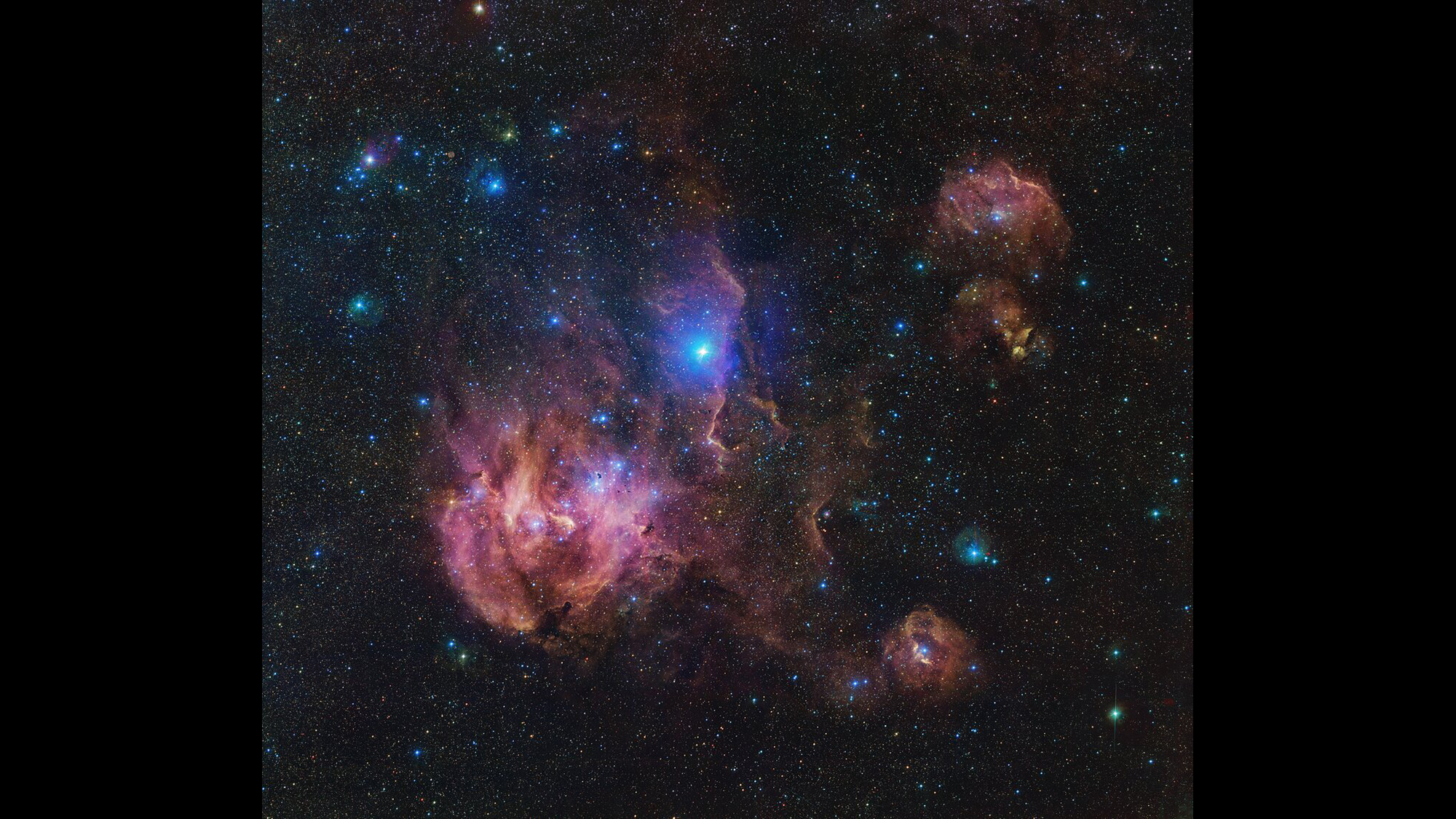

A nebula can look like a lot of different animals—a crab, tarantula, seagull, a cat’s eye, and even a chicken on the run. The European Southern Observatory’s VLT Survey Telescope in Chile took a new 1.5-billion-pixel image of IC 2944 aka the Running Chicken Nebula. It is located roughly 6,500 light-years away from Earth in the constellation Centaurus and this new image shows the nebula in new detail.
[Related: What animal do you see in this image of a nebula?]
According to NASA, a nebula is a giant cloud of dust and gas. Some nebulae come from the gas and dust that is thrown out by the explosion of a dying star. Others are regions where new stars are beginning to form. The Running Chicken Nebula is home to thousands of young stars in the making. These starlets within the nebula release intense radiation that makes the surrounding hydrogen gas take on a pinkish hue with the filters used to create the image.
This image is a mosaic of hundreds of separate frames that were stitched together. The individual images were taken with filters that allow the light of different colors through and the filters were combined to create the final image. The observations were taken using a wide-field camera called the OmegaCAM on the VST. The telescope is located in Chile’s Atacama Desert which maps the southern sky in visible light.
The Running Chicken Nebula is made up of several different stellar regions, which are all in this new image that spans an area of space that’s about 270 light-years wide. It would take the average chicken almost 21 billion years to run across it, according to the ESO. The brightest region within the nebula is IC 2948. This is where some observers see the bird’s head, while others see a chicken’s butt. The wispy pastel streams are additional plumes of gas and dust.
A region called IC 2944 is in the center of the image and is marked by brilliant and pillar-like structures. The brightest twinkle in this particular spot is called Lambda Centauri. This star can be bright enough to be seen without a telescope and is actually much closer to Earth than the rest of the nebula itself.
[Related: NASA releases Hubble images of cotton candy-colored clouds in Orion Nebula.]
Both IC 2948 and IC 2944 are home to many young stars that are not very bright. However, what they lack in brilliance, they make up for in radiation. These stars spew out huge amounts of ultraviolet radiation that make the region appear to look like a chicken running around. Some parts of the nebula called Bok globules can actually withstand the fierce bombardment from the ultraviolet radiation. These globules can be seen as dark, small, dense pockets of gas and dust throughout the image. Aside from the nebulae, numerous orange, white, and blue stars appear like fireworks with the filters.